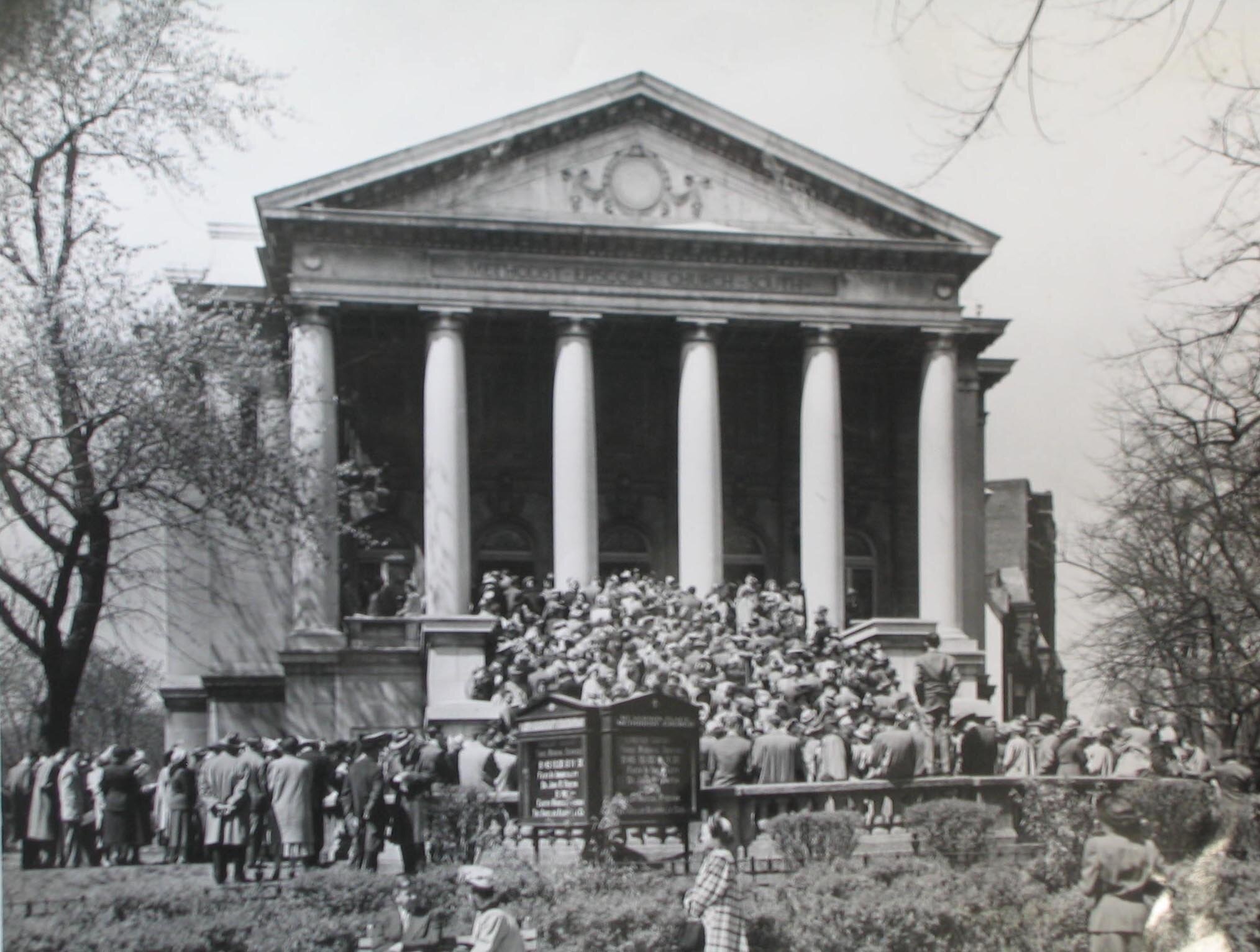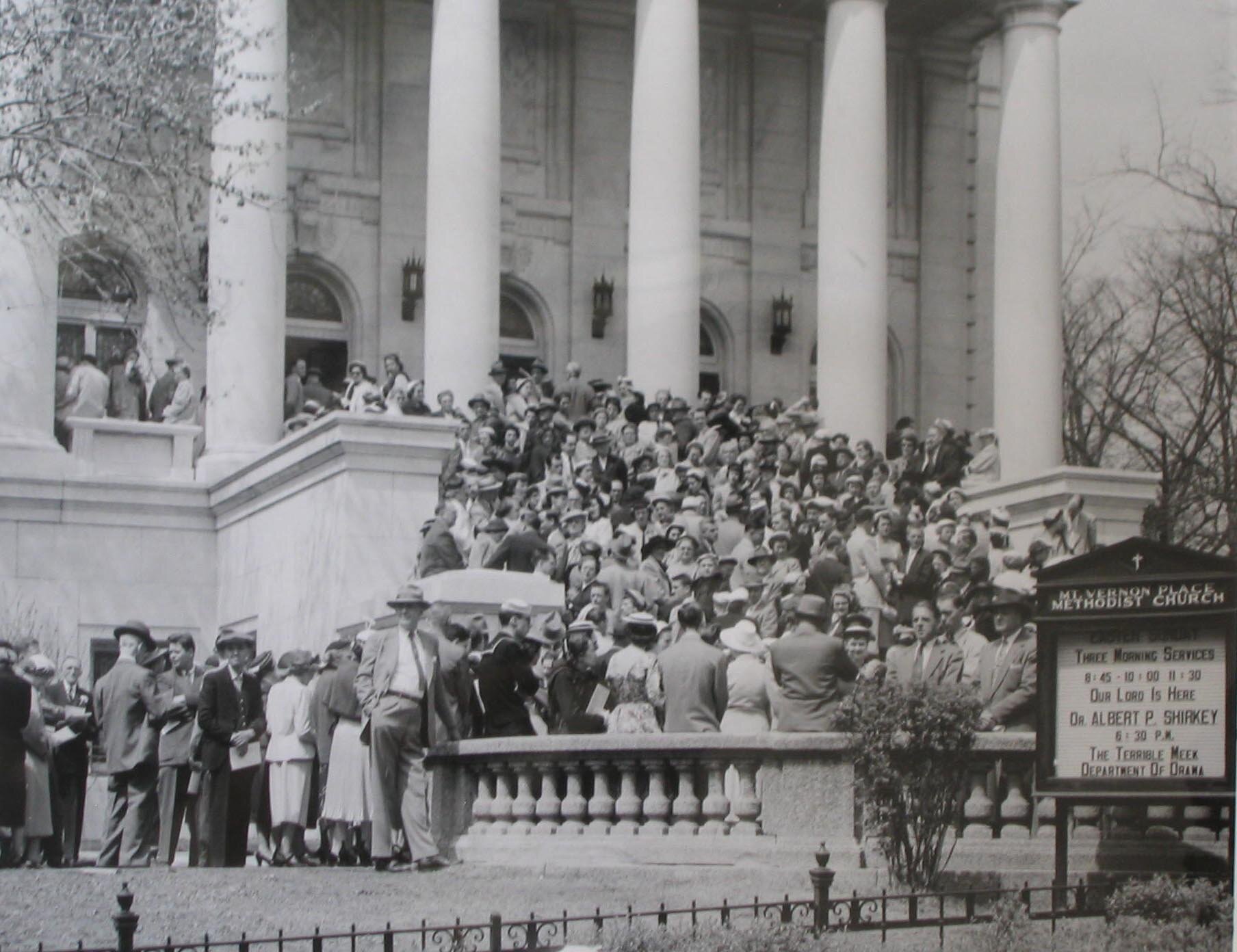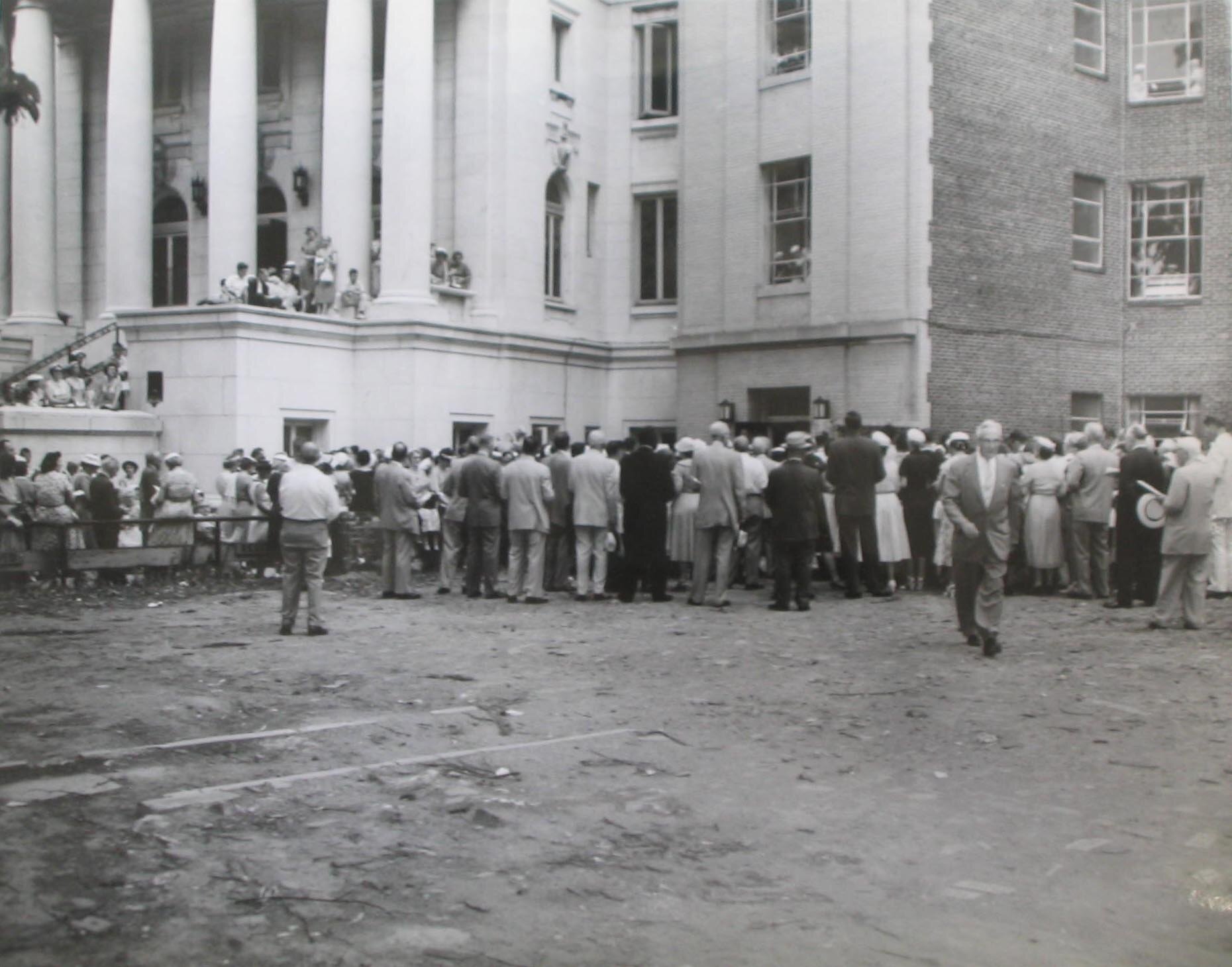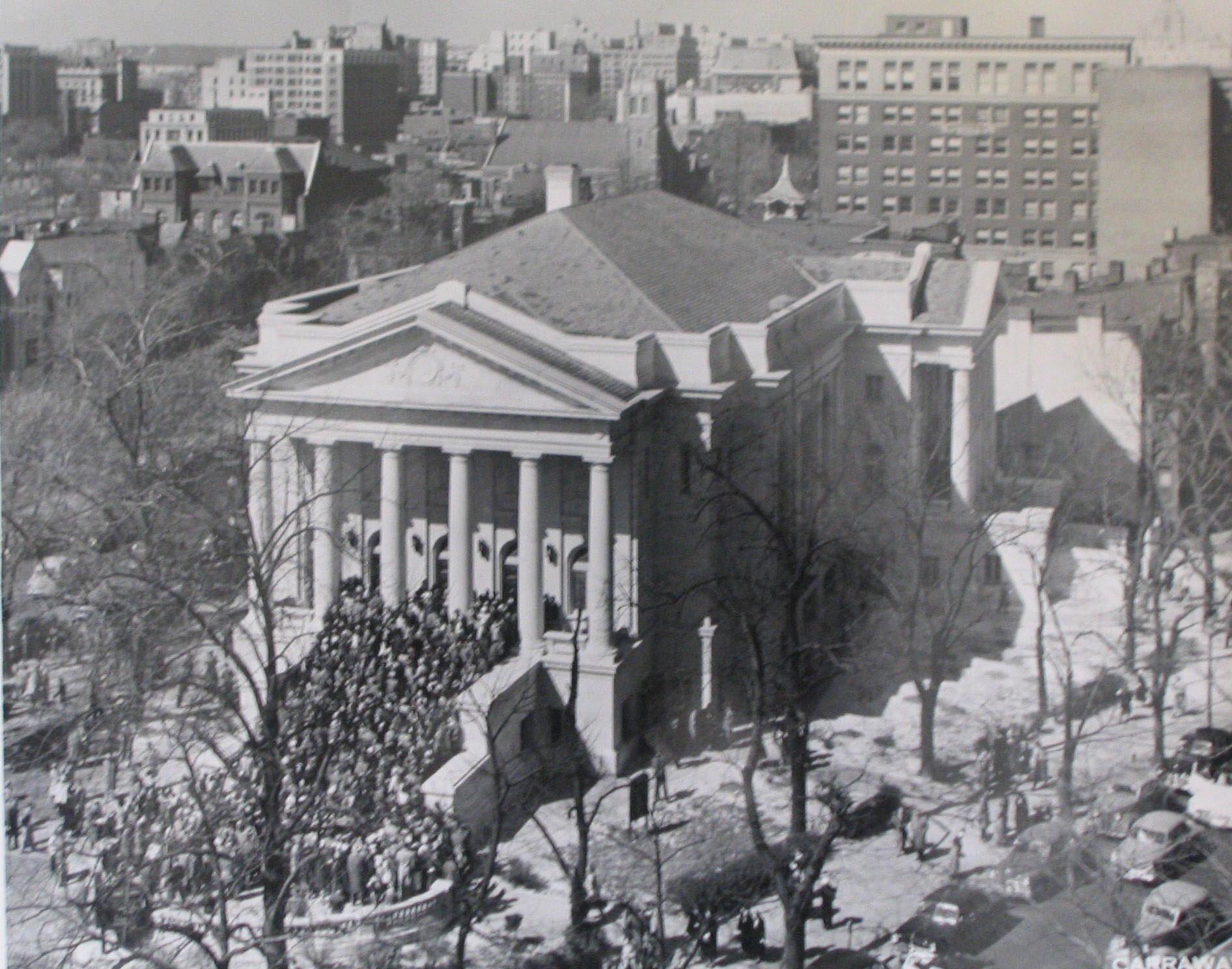John hope Franklin once said:
“WE’VE GOT TO TELL THE UNVARNISHED TRUTH.”
The Methodist Episcopal Church, South was formed in 1844 in response to the irreconcilable differences on slavery within the people called Methodists. Southern Methodists believed slavery was a civil institution that the church should stay out of. Six years later, Mount Vernon Place Methodist Episcopal Church, South was formed with 50 members who shared the proslavery stance.
Efforts to build a “representative” church building commenced not long after the congregation’s founding. The cornerstone for the magnificent building was finally laid on October 8, 1917 when hundreds of people united their voices in praying:
“May this sanctuary, when completed, long remain a house of prayer for all people....”
In reality, it took many years for Mount Vernon Place to live up to that goal of welcoming and including all people.
Mount Vernon Place has long known how to reach out to people with material needs. It was the first church to establish a Social Welfare department and put its social work on the level of other social agencies in the Washington area. Countless individuals turned to Mount Vernon Place for relief during the Great Depression. Food and clothing closets began in the late 1930s. Dozens of volunteers flowed from the church into Lorton Reformatory, St. Elizabeth’s Hospital, and other area institutions across the region. Volunteers from the church created a camp in Erica, Virginia in 1944 to provide a summer haven for children. A theatre group, The Mount Vernon Players, performed in the Undercroft Auditorium below the sanctuary.
The membership roster continued to grow and reached a high of 4,541 members in 1960. This large membership set Mount Vernon Place apart as the largest congregation in the Northeastern Jurisdiction of the Methodist Church.
But the 1960s brought many struggles to cities and to the nation—and to Mount Vernon Place, especially after the social unrest in Washington following the assassination of Dr. Martin Luther King, Jr. A steep decline in the congregation began until it dwindled to a near demise, leaving approximately 50 active members with an average age of 82-years-old at the turn of the 21st century.
By the grace of God, the longtime members of the church voted to sell a portion of the church’s property in July of 2005. The congregation vacated the entire property in 2006, worshipping across the street in the former Carnegie Library, before returning to the renovated historic building in 2008. The new addition, located within a trophy office building, was then dedicated in 2009. The proceeds of the property sale enabled the entire 1917 historic building to be renovated and restored. The congregation then purchased space in the new office tower for classrooms, offices, and gathering spaces. Learn more about this redevelopment process HERE.
The congregation became deeply involved in urban renewal and provided vital support for people experiencing homelessness, something that continues to this day. The Shower Ministry started in 2010 when the church began to open its doors for neighbors to receive toiletries, undergarments, continental breakfast, community, and a hot shower. The children’s ministry was rebirthed in 2008 after years of having very few children in the congregation.
The congregation voted to become a member of the Reconciling Ministries Network in 2009, proclaiming the widest possible welcome to all people, particularly our LGBTQ+ siblings. In 2017, the congregation repented for our roots in white supremacy during a service of worship in which members signed a banner hung outside.
With our witness, we truly strive now to be a house of prayer for all people.
Today, we are a young vibrant congregation that gathers in-building and online, 90% of whom have joined the church since the property was sold in 2005. Eight members have responded to a call to ministry and entered seminary and/or the process that leads to ordination in the United Methodist Church. Lives have been touched and transformed as the congregation continues to learn from our full history while seeking be a real factor in people’s lives.
We have much for which to give thanks, and we cannot wait to see all the future holds.
2017 Service of Repentance
"The congregation repented for our roots in white supremacy in a service on October 8, 2017. You can read about this service and action in a Washington Post article."







